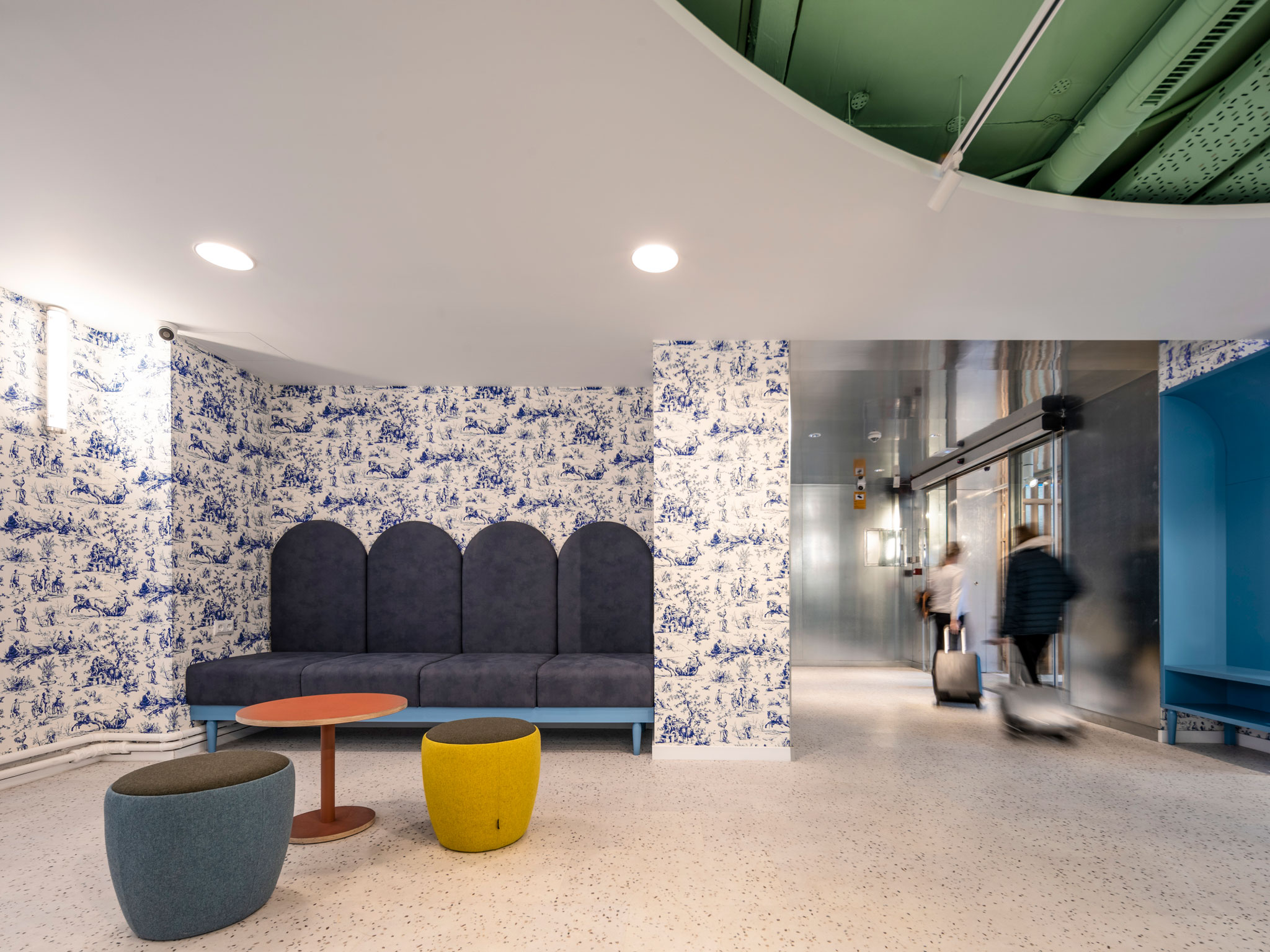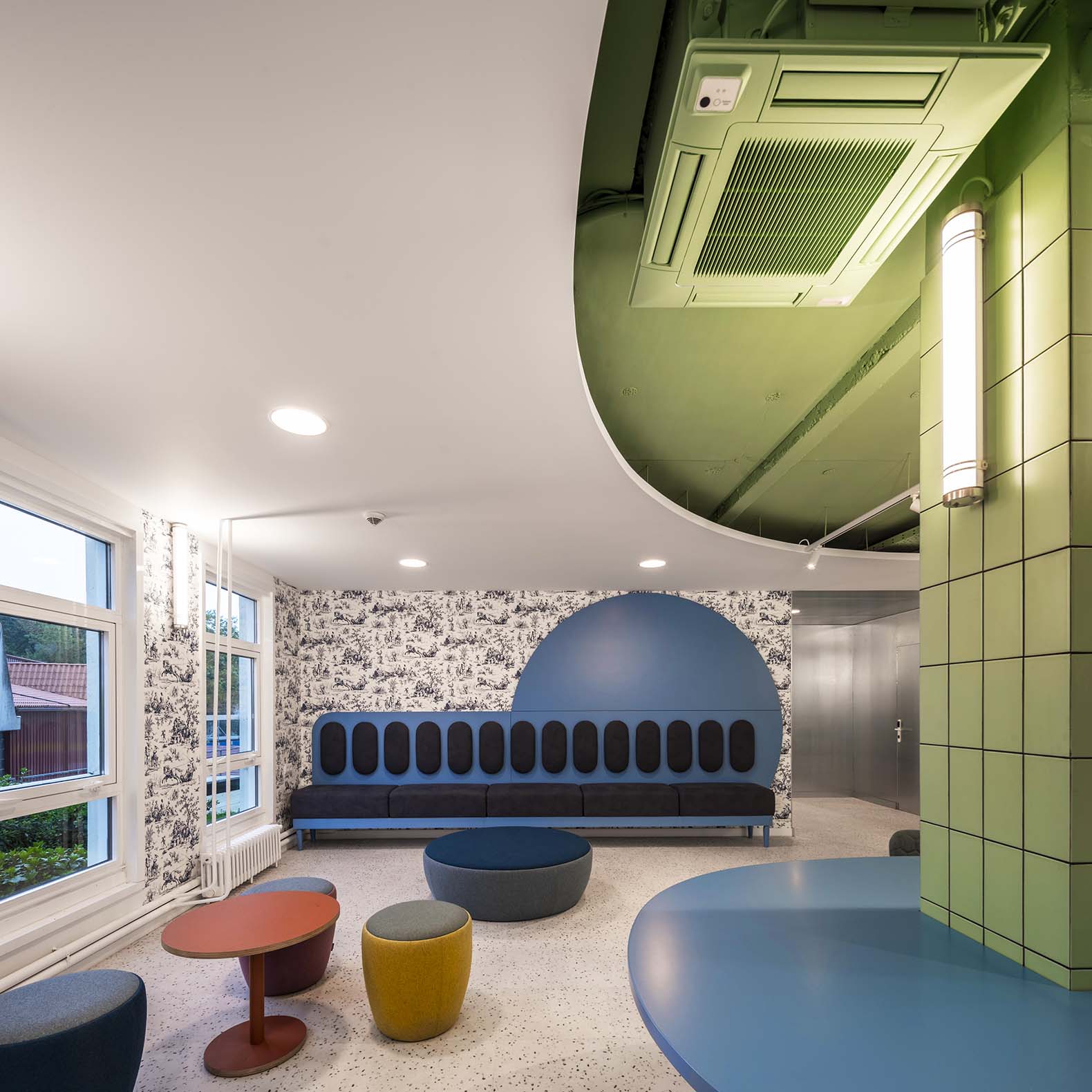The reform uses color and furniture as protagonists to rearrange the access, reception, and living areas, expanding the spaces for collective use and allowing their effective use by large groups of users.

Loop Inn Santiago by Martin Lejarraga. Photograph by Santos-Diez.

Project description by Martín Lejarraga oficina de arquitectura
The city of Santiago de Compostela, declared a World Heritage Site by Unesco in 1985, receives more tourists every year interested in the many attractions of the city.
Loop Inn Santiago is located in a strategic location within the city as a whole, just 800 m from the Cathedral, which makes it the last stop on the road before reaching the Apostle and positions it as a reference accommodation for tourists. visitors and pilgrims
The project proposes the renovation and updating of a traditional lodging building with a double objective. On the one hand, adapting the existing facility, which lacks collective living areas, to its new and growing needs. On the other, turning a building without character or elements of interest into a vibrant space is characteristic of the Loop Inn brand.
The intervention rearranges the access and reception areas and expands the spaces for collective use allowing their effective use by large groups of users.

Loop Inn Santiago by Martin Lejarraga. Photograph by Santos-Diez.
The use of furniture and color acquires a special role throughout the intervention, being a structuring tool in the organization of the project program. The ad hoc design of the furniture has a strong functional and formal component, making it possible to optimize the capacity of the areas while giving them a unique character.
The action, which tries to break with everything that exists, begins a "modus operandi" with which to continue the renovation of the rest of the areas, with the aim of surprising a pilgrim who, after many days on the Camino, believes that he has already done it. seen everything.













































